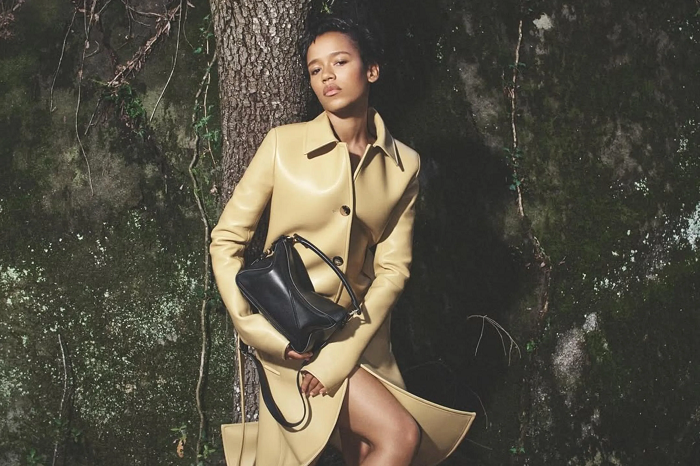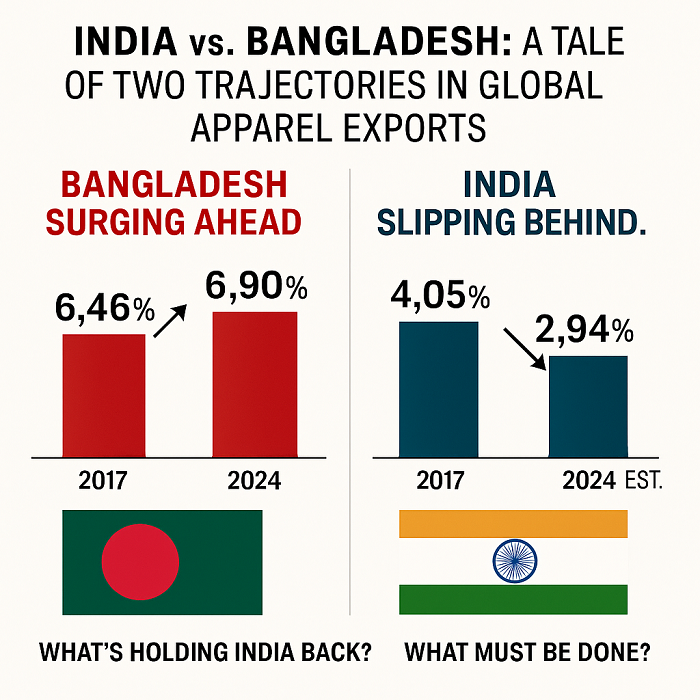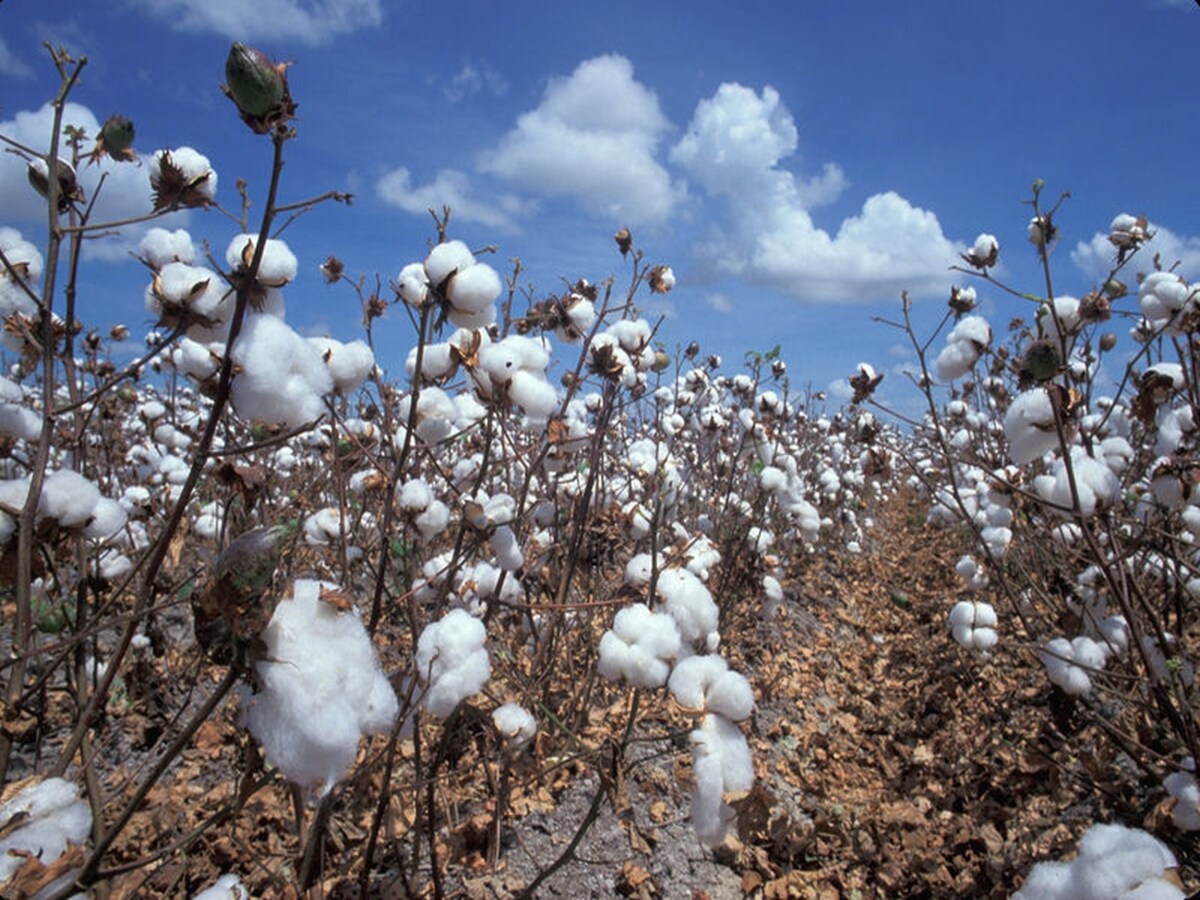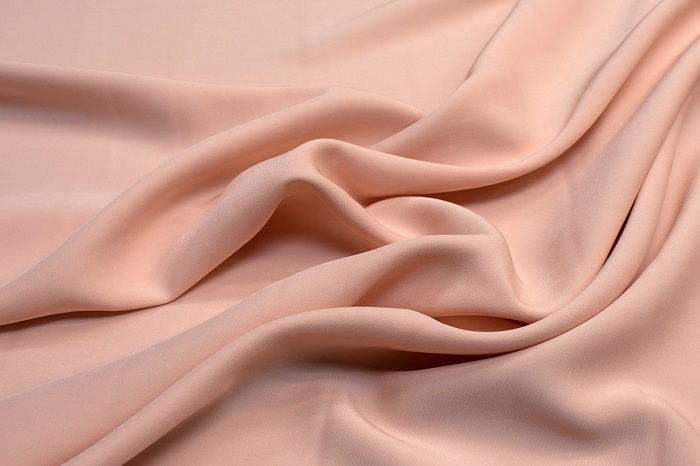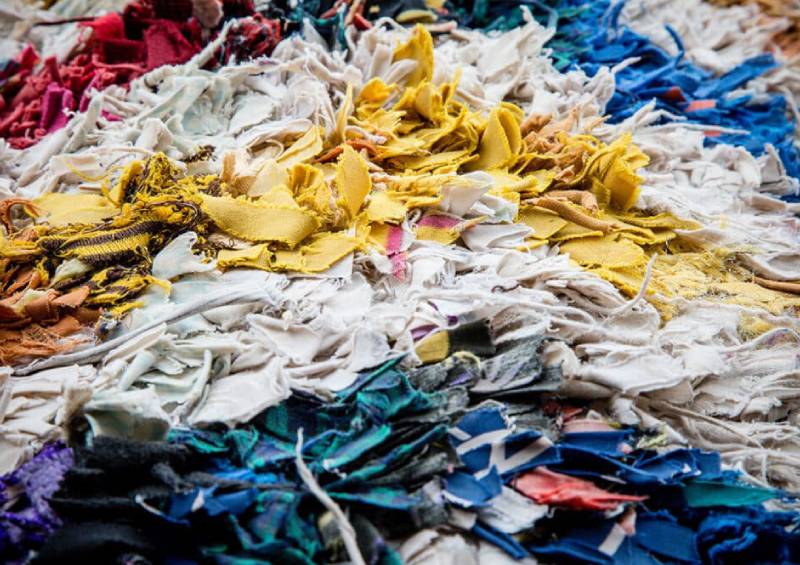FW
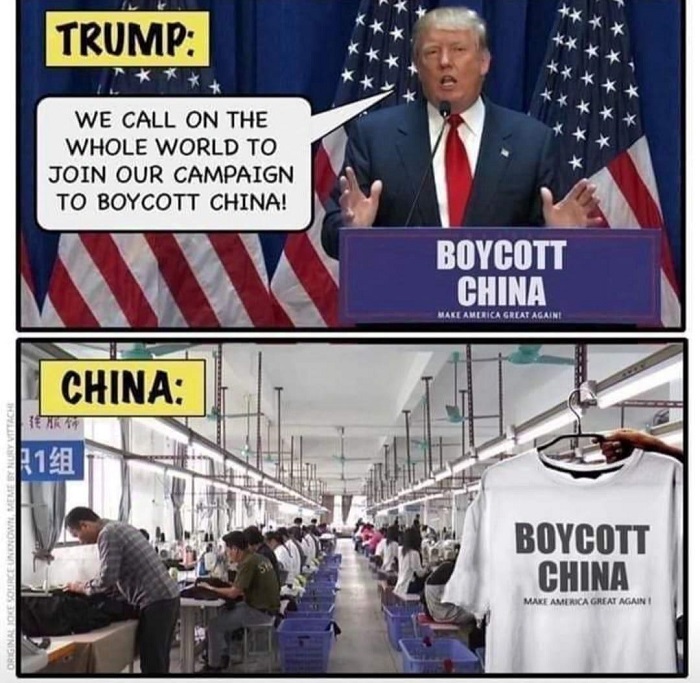
The U.S.-China trade tensions that escalated under the Trump administration profoundly impacted China’s textile and apparel industry. The policies implemented primarily through tariffs disrupted supply chains, forced companies to adapt sourcing strategies, and reshaped the global apparel trade landscape. Examining the long-term effects, adjustments within the industry, and the broader economic implications…an analysis below. c Impact of tariffs on trade volumes and prices
During the Trump era, U.S. tariffs on Chinese imports included up to 25% tariffs on textiles and apparel, which led to a significant reduction in U.S. imports from China. By 2022, China’s share in the U.S. apparel market dropped as companies sought lower-cost alternatives in Vietnam, Bangladesh, and other Southeast Asian countries. This shift is reflected in data showing that countries outside China increased their U.S. market share from 41.2% in 2018 to over 51% in 2022, with Chinese imports largely focused on premium segments where consumers were less sensitive to price increases. For example, items like high-end coats and outerwear continued to be sourced from China, while lower-end products were shifted elsewhere.
Shift in supply chains and "Tariff Engineering"
The tariffs pushed companies to diversify their supply chains, a strategy known as "China Plus One," which involved sourcing from China alongside one or more other countries to mitigate risks. Additionally, many U.S. companies resorted to "tariff engineering," modifying designs to achieve lower tariff classifications. For instance, adding features to a garment, such as pockets, could reduce the applicable tariff rate. However, tariff engineering and supply chain diversification require substantial investment, creating challenges particularly for small and medium-sized businesses.
Retaliatory actions and market challenges
In response to U.S. tariffs, China imposed retaliatory tariffs on American imports, further straining trade relations. For China’s apparel industry, which relies heavily on the U.S. market, these reciprocal tariffs intensified the need for market adaptation. Companies faced increased costs not only from the tariffs themselves but also from retooling and repositioning products for markets with less exposure to U.S. tariffs.
Impact on global apparel industry and U.S. retailers
The tariffs impacted not only Chinese manufacturers but also U.S. retailers dependent on low-cost imports. The National Retail Federation estimated that American consumers faced billions in additional costs due to increased tariffs, ultimately affecting retail prices. Moreover, even after Trump, the Biden administration continued many of these tariffs as leverage in trade negotiations, signalling that these changes could be long-term. This uncertainty has led many U.S. brands to prioritize building resilient, diverse supply chains to avoid dependency on any single region.
China’s transition to premium manufacturing
A notable case study is China’s shift towards higher-end production to maintain profitability amid rising costs and tariffs. By focusing on premium products, Chinese manufacturers retained demand in sectors less impacted by price sensitivity, such as luxury and designer apparel. This transition highlights China’s evolving role, moving from low-cost mass production to higher-quality, higher-margin goods that cater to more affluent markets, helping offset some losses due to reduced volume in lower-end segments.
Trump’s policies accelerated shifts in the global apparel industry, with lasting effects on China’s textile sector. While diversification provided resilience, increased costs and strategic adjustments marked a challenging period for both Chinese exporters and U.S. retailers. The ongoing U.S.-China trade complexities suggest that the textile and apparel industries will continue to navigate these dynamics, likely shaping a more fragmented and resilient global supply chain landscape.
Today, EURATEX (the European Apparel and Textile Confederation) and AMITH (Association Marocaine des Industries du Textile et de l'Habillement)signed a Memorandum of Understanding (MoU) during the 21st Maroc in Mode (MIM 2024) event in Casablanca, aiming to strengthen ties between European and Moroccan textile industries. This agreement seeks to foster collaboration on sustainability, regulatory alignment, and trade competitiveness.
The MoU highlights mutual goals, including promoting sustainable and circular industry practices, improving regulatory frameworks, and enhancing the business environment across both regions. It underscores a joint commitment to advancing competitiveness under the updated Pan Euro Med (PEM) Convention rules, set to take effect on January 1, 2025.
The partnership enables new channels for information sharing on industrial technology, cross-border business initiatives, and joint skill development projects, setting a foundation for a robust and resilient Euro-Mediterranean textile sector.
EURATEX President Mario Jorge Machado emphasized that the collaboration with AMITH aims to bolster the textile sectors in both regions with a focus on sustainability and competitiveness. AMITH President El Ansari Anass noted that the MoU supports AMITH’s mission to drive the Moroccan industry towards greater excellence and sustainability.
This MoU marks a pivotal step towards creating a sustainable, integrated textile ecosystem in the Euro-Mediterranean region, opening fresh opportunities for growth and innovation under the PEM framework.
Marking the Italian footwear brand’s debut in the apparel segment, Moon Boot has unveiled its first collaborative collection with Adidas Sportswear.
The collection comprises items partly made using recycled materials, and is ideal for urban safaris in the winter months. It includes a range of looks including crop-top leggings, parachute trousers and a cropped oversized sweatshirt. Plus of course footwear, combining the comfort of snow boots with the agility of running shoes.
The high-top and low-top shoes are fitted with Adidas Boost cushioning and water-repellent uppers to keep the feet dry in winter conditions, while the Adidas Torsion System, integrated in the sole, enhances stability. The Collegiate jacket, inspired by American varsity style, is an oversize bomber jacket featuring skiwear-style details and bold, eye-catching graphics on the front and back, celebrating both brands’ emblems.
Aimee Arana, Global General Manager Sportswear & Training, Adidas says, the collection blends sport performance with trending style.
Alberto Zanatta, President, Tecnica Group, adds, this is a significant milestone for Moon Boot which is entering the apparel segment for the first time.
Fashion brand and retailer Monsoon has launched a new limited-edition collection of partywear co-created by ‘designer and tastemaker’ Sarah Corbett-Winder.
Inspired by Corbett-Winder’s unique personal style, the collection features five staple partywear pieces plus accessories. It’s the brand’s full design collaborative collection with a stylish and creator.
The collection includes a two-piece tuxedo-inspired suit adorned with chocolate sequins and trimmed with deep brown satin; a feather-trimmed scarlet co-ord; and an olive-green velvet jumpsuit with detachable oversized bow.
It also includes Caroline Jackson, Creative Director’s signature luxe party wear range with velvet, sequins and satin.
Bouncing back from its problems of the last decade and early in this decade when the pandemic hit its trade hard, Monsoon has been opening new concept stores, including a move into travel-focused locations. It has also invested in its digital operations,
Signaling a robust performance driven by affluent customers purchasing its high-end cable-knit sweaters and Oxford shirts, Ralph Lauren has raised its annual sales forecast. This strong result stands out against a broader slowdown in the luxury market, notably affecting major European fashion houses like Hugo Boss, Kering, and LVMH, which have been impacted by a decline in the vital Chinese market.
Supported by a relatively smaller sales base, Ralph Lauren has experienced solid growth in China, accounting for approximately 7 per cent of its overall revenue, as per Citigroup analysts. The brand’s sales in North America, representing about 44 per cent of Ralph Lauren’s total revenue, increased by 3 per cent during the quarter. Meanwhile, revenue from Europe rose by 7 per cent.
Known for its iconic Polo Bear sweaters, the company projects, its fiscal 2025 revenue will grow in the range of 3 per cent– 4 per cent, as against its earlier forecast of a 2 per cent to 3 per cent increase. This adjustment follows strategic shifts, including reducing its reliance on department stores like Macy’s, which have faced difficulties in attracting customers. Instead, Ralph Lauren has prioritized full-price sales and reduced promotions through its branded outlets and online channels.
The brand’s adjusted gross margin expanded by 160 basis points to 67 per cent during the quarter driven by a 10 per cent increase in average selling price and lower cotton costs. Quarterly net revenue grew by 6 per cent Y-o-Y to $1.73 billion, surpassing analysts’ expectations of $1.68 billion, as compiled by LSEG.
The Ministry of Agriculture and the Ministry of Industry in Egypt have collaborated with the United Nations Industrial Development Organisation (UNIDO) to launch the second phase of the Egyptian Cotton Project. Initiated with an aim to enhance sustainability across the cotton value chain, this initiative focuses on environmental, economic, and social advancements.
The project seeks to enhance the cotton industry processes, from cultivation through to textile production, to boost competitiveness amid a fast-changing global market. It also aims to help the sector to adhere to international sustainability standards, thus contributing significantly to Egypt’s economy. Long recognised as a cornerstone of the nation’s textile industry, the Egyptian cotton sector plays a crucial role in economic growth and job creation, impacting everything from raw cotton production to garment manufacturing.
Building on the initial project, running from 2018 to 2021, the project aims to support to cotton farmers and industry stakeholders, with the Egypt Cotton Research Institute as a key partner. It will focus on expanding cotton cultivation in key areas such as Kafr El-Sheikh and Damietta and offer training in both traditional and organic farming techniques.
Introduced in Egypt in 2020, UNIDO’s Better Cotton certification was the first sustainability standard tailored specifically for Egyptian cotton. This certification aligns with global sustainability objectives and now covers 25 per cent of the world’s cotton production. Initially starting with 1,600 farmers, the Better Cotton initiative has since grown to include 13,700 farmers across six governorates, with increasing engagement from the private sector.
According to Egypt’s Central Agency for Public Mobilisation and Statistics (CAPMAS), the total cotton cultivation area reached 237,700 acre in the fiscal year 2020/2021, with Kafr El-Sheikh contributing 85,500 acre. The demand for Egyptian cotton remains robust, with India identified as the largest importer as of August 2021.
The partnership between Egypt and UNIDO highlights the critical role of sustainable practices in the cotton sector, aiming to boost production, expand exports, and strengthen Egypt’s competitive edge in the global textile industry.
To stay competitive in the fast-evolving market, stakeholders in Tamil Nadu’s textile industry need to modernise existing powerloom units by updating machinery and retrofitting, emphasise industry representatives.
Stakeholders also highlight on the government’s need to address the operational challenges associated with Common Effluent Treatment Plants (CETPs), particularly the management and disposal of sludge generated during the treatment process. This issue is critical for maintaining environmental standards and sustaining industry operations, they say.
The Tamil Nadu Department of Handlooms, Handicrafts, Textiles, and Khadi recently held several discussions with various textile industry associations in Chennai to formulate a new textile policy. This policy aims to align more closely with the current industry needs and build upon the framework of the 2019 textile policy.
The upcoming policy will focus on supporting smaller units, particularly those in the man-made fibre (MMF) sector with a turnover of less than Rs 50 crore. Additionally, the state aims to establish 10 mini textile parks to boost local manufacturing. It also plans to set up an integrated textile park near Salem to support the processing industries in the region.
The new policy will also strengthen Tiruppur’s status as a key player in the apparel value chain. Known for its substantial Rs 35,000 crore export business and Rs 25,000 crore in domestic trade, Tiruppur is expected to lead in Environmental and Social Governance (ESG) initiatives, making it more attractive for investments. The region’s garment sector workforce is predominantly female, with women making up 80 per cent of the employees.
However, industry leaders have expressed concerns over rising electricity costs, which currently average around Rs 9.5 per unit, significantly impacting operational expenses. Associations from Coimbatore and Tiruppur have called for state intervention to support struggling mills. SK Sundararaman, Chairman, Southern India Mills’ Association, highlights, only 60 per cent of textile mills in Tamil Nadu are operational, underscoring the need for swift action. He notes,investment-friendly policies in states like Gujarat, Maharashtra, and Madhya Pradesh are drawing businesses away. Without timely and supportive measures, textile sector in the state could face a severe downturn, he warns.
A key player in the Indian textile industry, Globe Textiles (India showcased steady revenue growth, improved operational efficiencies and enhanced investor transparency in H1, FY24 ending Sep 30, 2024.
The company’s revenue from operations during the period increased by 8.32 per cent to Rs 25,431.91 lakh from Rs 23,478.67 lakhs recorded during the same period the previous year. This growth was driven by a strong market demand and an increase in operational capacity, illustrating the company’s ability to expand its market share in a competitive environment.
Other income by the company also rose to Rs 36.20 lakh from Rs 31.53 lakh in the prior year, contributing positively to overall earnings. Its total income, combining revenue from operations and other income, expanded to Rs 25,468.11 lakh from Rs 23,510.20 lakh, indicating healthy top-line growth.
Profit before tax by the company rose significantly by 65.1 per cent to Rs 585.43 lakh from Rs 354.48 lakh in the corresponding period of the previous fiscal.Its profit after tax expanded by 75.8 per cent to Rs 493.83 lakh, emphasising the company’s strategic cost management and operational efficiency.

Driven by consumer demand and increasing awareness of the climate crisis, major apparel brands and retailers are turning to tech startups for innovative solutions to achieve sustainability and drive innovation. This shift marks a new era of collaboration, where established giants are leveraging the agility and ingenuity of startups to create a more responsible and forward-thinking industry.
A symbiotic partnership
As is well known the fashion industry is a major contributor to global pollution, accounting for almost 10 per cent of global carbon emissions. From resource-intensive production processes to the mountains of textile waste generated annually, the need for sustainable practices is more urgent than ever. This has given rise to an ecosystem of fashion tech startups focused on developing innovative solutions across the value chain.
For established fashion giants, partnering agile startups offers several advantages. First, it gives them access to cutting-edge technology as startups are often at the forefront of developing innovative solutions in areas like AI, blockchain, and material science. It gives agility and speed to brands as startups can quickly adapt and implement new ideas, unlike larger corporations with complex hierarchies. And more importantly, many fashion tech startups are founded with a core mission of sustainability, offering solutions that align with the growing consumer demand for responsible fashion.
The gains for start-ups are many as well. They get access to funding and resources as large brands can provide much-needed capital and infrastructure to scale up innovative solutions. They also get expertise and can networks widely as established players offer valuable market knowledge and distribution channels. Association with a recognized brand also boosts a startup's profile and accelerates growth.
Collaborations galore
From manufacturing to transparency they are teaming up for numerous reasons. For example, some startups are pioneering new materials like mushroom leather and recycled fabrics, while others are developing technologies to reduce water and energy consumption in manufacturing processes. In fact, Kering, the luxury group behind brands like Gucci and Saint Laurent, has invested in Bolt Threads, a biotechnology company creating sustainable materials like Mylo, a leather alternative made from mycelium. Kering has also invested in Worn Again Technologies, a startup developing innovative textile recycling technology. This partnership aims to create a circular economy for textiles, reducing waste and reliance on virgin materials.
These collaborations are leading to supply chain transparency since blockchain technology is being used to track the origin of raw materials and ensure ethical sourcing practices. Take Provenance, a blockchain platform for example, which is working with brands like Cult Gaia and A.P.C. to provide consumers with verifiable information about the products they purchase. Adidas partnered Spinnova, a Finnish startup that produces sustainable textile fiber from wood pulp without harmful chemicals. This collaboration led to the development of the Terrex HS1 hoodie, a high-performance outdoor jacket made with Spinnova's innovative material.
Then startups are developing solutions for clothing rental, resale, and recycling, promoting a circular fashion model that reduces waste and extends the life cycle of garments. ThredUp, the online consignment and thrift store is the best example of this, it has partnered brands like Reformation and Gap to facilitate resale and encourage consumers to adopt a more circular approach to fashion.
AI-powered platforms are also helping brands offer personalized recommendations and styling advice, reducing overconsumption and promoting mindful purchasing decisions. Stitch Fix, the personal styling service, uses data and algorithms to curate clothing selections tailored to individual preferences, promoting a more intentional approach to shopping. H&M Group has invested in Unspun, a startup using 3D body scanning and on-demand production to create custom-fit jeans. This technology minimizes waste and offers a personalized consumer experience.
Acquisitions and incubators the other alternative
Besides partnerships, global brands are also acquiring promising startups and launching incubator programs to foster innovation. Nike's acquisition of Virtusize, a virtual fitting room technology provider, highlights the growing importance of digital tools in enhancing the consumer experience and reducing returns. On similar lines, LVMH, the world's leading luxury goods group, has launched an accelerator program called La Maison des Startups to support and mentor emerging fashion tech companies.
The collaborations between big fashion brands and tech startups is still in early stages, but its potential is undeniable. As technology continues to evolve and consumer expectations shift, we can expect to see even more innovative solutions emerge. This partnership model holds the key to creating a more sustainable, transparent, and inclusive fashion industry for the future.
Global Standard has lifted the suspension of Intertek Testing Services NA Inc, a GOTS-approved Certification Body (CB), following confirmation from its Accreditation Body, ANAB (ANSI National Accreditation Board), that the necessary corrective actions have been taken.
ANAB conducted a thorough review of Intertek’s processes and, on 5 November 2024, reinstated its GOTS accreditation. The accreditation allows Intertek to resume certification and recertification services for GOTS programs, with ongoing oversight. ANAB will continue to monitor the effectiveness of Intertek’s corrective actions during future assessments and enforce additional monitoring requirements, including more frequent reviews and reporting.
As part of the reinstatement, Global Standard has directed Intertek to resume operations with heightened due diligence, oversight, and caution to ensure compliance with GOTS standards. The decision follows a period of suspension and ensures that Intertek can continue to support its clients with trusted certification services.
Global Standard thanked stakeholders for their patience and is optimistic about the future collaboration with Intertek as it resumes its role in the GOTS certification process.

